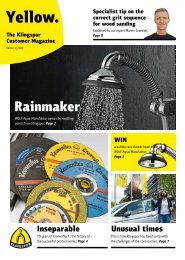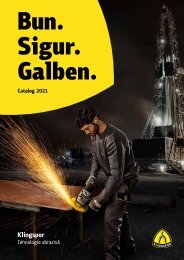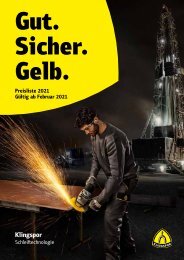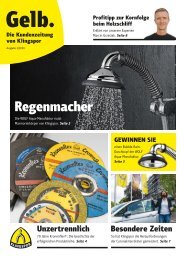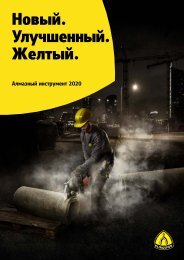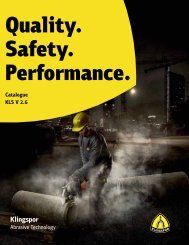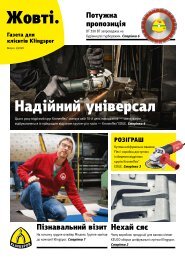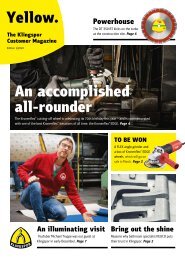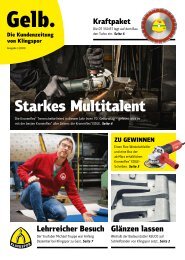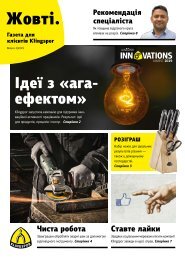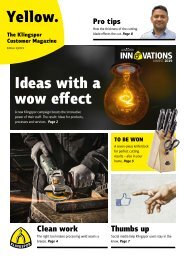Wood brochure - South Africa
Create successful ePaper yourself
Turn your PDF publications into a flip-book with our unique Google optimized e-Paper software.
Klingspor solutions for the wood trade and furniture industry<br />
The selection of the right abrasive<br />
The selection of the right abrasive<br />
Backing<br />
The backing carries the abrasive grain and transmits the cutting forces onto the<br />
workpiece surface. As a general rule, the bigger the abrasive grain, the higher the<br />
cutting performance and the higher the load exerted on the backing. The higher<br />
the load is, the stronger and more tear-resistant the backing needs to be.<br />
There are basically four materials that are used to make the backing:<br />
1. Paper<br />
2. Cotton cloth<br />
3. Polyester cloth<br />
4. Polyester film<br />
<strong>Wood</strong>working<br />
The following properties play a key role in the selection of the right abrasive:<br />
Tear resistance: Since at times subjected to tremendous tensile forces, some abrasive tools need to be<br />
matched with a backing of great tear resistance. Backings that provide the strongest tear resistance are made<br />
of polyester, but at the same time, offer only minimum flexibility.<br />
Flexibility: Workpieces with high profiles must be processed with an abrasive whose backing is capable of<br />
shaping to the contour of the workpiece. These applications require a great deal of flexibility, which in turn, has<br />
a negative impact on tear-resistance.<br />
Flexibility<br />
JF cloth<br />
A-paper<br />
J cloth<br />
GX blended fabric<br />
B-paper<br />
C-paper<br />
XF cloth<br />
D-paper<br />
E-paper<br />
F-paper<br />
X cloth<br />
G-paper<br />
Y / Z cloth<br />
Tear resistance<br />
7




